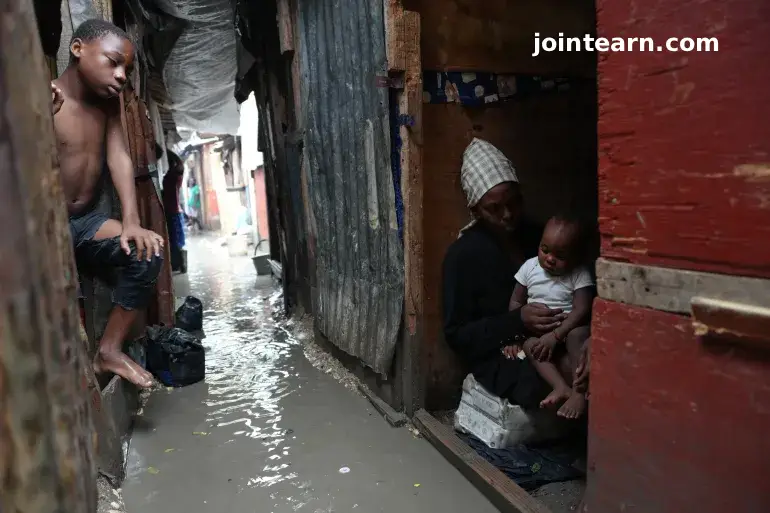
KINGSTON, Jamaica – October 30, 2025 — Across the northern Caribbean, nations are taking stock of the catastrophic destruction left by Hurricane Melissa, one of the most powerful storms ever to strike the region. The Category 5 hurricane, which tore through Jamaica, Haiti, and Cuba earlier this week, has left a trail of death, destruction, and displacement in its wake.
Massive Damage and Mounting Death Toll
The hurricane, the strongest on record to make landfall in Jamaica, slammed into the island with sustained winds exceeding 260 km/h (160 mph) before moving on to Cuba. At least 25 people have been confirmed dead in Haiti, eight in Jamaica, and one in the Dominican Republic, according to regional disaster agencies.
In Haiti, the coastal town of Petit-Goâve suffered catastrophic flooding when a river burst its banks, sweeping away homes and killing at least 20 residents. More than 12,000 people remain in emergency shelters, many of them already displaced by gang violence before the storm struck.
In Jamaica, entire communities were flattened in the western parishes of St Elizabeth and St James. Hurricane Melissa ripped off roofs, uprooted trees, flooded hospitals, and left much of the country without power or running water.
Jamaica’s Struggle to Rebuild
Prime Minister Andrew Holness described the storm’s aftermath as “unprecedented” and pledged a “credible and strong” recovery plan. During an aerial survey of the devastated regions, Holness called the destruction in the town of Black River “ground zero” of the disaster.
“The entire infrastructure has been destroyed,” Holness said in a video update, confirming that emergency relief operations were under way to provide food, water, and temporary shelter.
Despite severe flooding, Norman Manley International Airport in Kingston reopened late Wednesday, allowing relief flights carrying essential supplies to begin landing. The Jamaica Public Service Company has launched a massive damage assessment and urged residents to avoid downed power lines “at all costs.”
One resident, Sylvester Guthrie, from St Elizabeth Parish, shared his heartbreak: “I don’t have a house now. I lost everything except my bicycle. I am going to need help.”
Cuba and Haiti Begin Cleanup Amid Crisis
After battering Jamaica, Hurricane Melissa made a second landfall in Cuba, where the storm was later downgraded to Category 1 with winds still reaching 155 km/h (100 mph). While Cuba reported no fatalities, the government confirmed that over 735,000 people had been evacuated as a precaution.
Cuban military units and civil defense forces are now leading recovery operations, clearing blocked roads and restoring communication lines. Authorities have warned of ongoing flood risks, particularly in coastal regions.
In Haiti, where infrastructure and governance remain fragile, the combination of flooding, displacement, and limited emergency response capacity has deepened the country’s humanitarian crisis. International aid agencies are calling for urgent assistance to prevent outbreaks of disease in overcrowded shelters.
International Support and Humanitarian Response
The United States and the United Kingdom have pledged support for Jamaica and neighboring nations affected by the hurricane. Relief efforts are being coordinated through international humanitarian agencies and local disaster response units.
According to the U.S. National Hurricane Center (NHC), Hurricane Melissa’s eye moved north of the Bahamas early Thursday and is expected to pass west of Bermuda while weakening further over open waters.
Even as the storm dissipates, the scale of its destruction remains staggering. Across the Caribbean, entire communities are without power, and thousands face weeks—if not months—of rebuilding their lives.
Leave a Reply